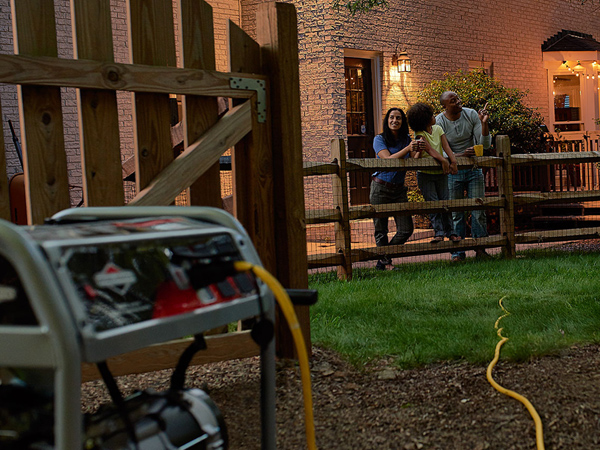Power anytime, anywhere. Whether you’re looking to protect your home and family, power a job site or your campsite, we’ve got you covered. Portable generators are a reliable power source, compact and easy to use, giving you consistent power and performance no matter what the job at hand might be.
How Portable Generators Work
Portable generators provide electricity by running a gas-powered engine that turns an on-board alternator to generate electrical power. Power outlets on the unit allow you to plug extension cords, electric-powered tools and appliances into it. In general, the more powerful the generator, the more outlet combinations are available.
Unlike standby generator systems, portable generators are not permanently installed, can be easily moved from place-to-place and must be manually started. Portable generators are rated by the amount of power they produce, which are called watts. Typically, the more watts equals the more items you can power up. There are two kinds of watts- running watts and starting watts:
- Running watts = The continuous watts produced to keep items running.
- Starting watts = The extra power needed to start large motor-driven appliances or multiple items.
A typical portable generator contains the following primary components assembled together onto a metal frame in a single unit:
- Internal combustion engine
- Alternator
- Starter
- Fuel tank
- Outlets
Storage & Maintenance Tips
You may need your portable generator at a moment's notice, make sure it's ready to run by properly maintaining it.
Short-Term Storage (2-3 weeks)
After each use, clean debris off the unit. Store in a spot in your garage or outbuilding where you can get to it easily when you need to use it.
Long-Term Storage (2-3 months)
For longer-term storage, fill the tank with fuel and add a gasoline stabilizer in the tank like Briggs & Stratton® 5-in-1 Advanced Formula Fuel Treatment and Stabilizer.
Use Fuel Stabilizer
Don’t use your portable generator often? Store it with an empty fuel tank or use fuel stabilizer to deter gum from forming in and clogging up the fuel system. Add a stabilizer and then run your generator for a few minutes to circulate the solution through the carburetor. Fuel treatment keeps fuel fresh for up to 36 months.
Change Your Generator Oil
Make sure your portable generator has enough oil in it to keep it running smoothly and improve your engine’s lifespan. Many generators shut down automatically to protect the engine if the level gets too low. Check the oil level whenever you add fuel by looking at the dipstick and filling oil to the full marker.
The type of equipment you use, the engine within, and the temperature outside determines what type of oil to use, how much you need and the cost of the oil. Use our Oil Finder tool to find the right oil for you.
Inspect Replaceable Parts Regularly
In addition to the engine oil, check out your carburetor, air filter, fuel filter and spark plug regularly according to your portable generator operator's manual.




